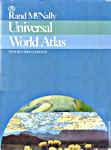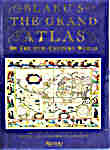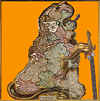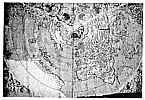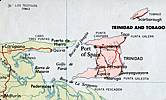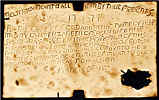
The Murmansk Convoys
The WWII Murmansk convoys transported supplies from America (Halifax, Canada) to Murmansk, Russia. Preyed upon by U-boats all the way, near Europe the convoys got within range of German Condor spotting aircraft, which directed the U-boat packs towards them, resulting in wholesale slaughter.Not many men had twice made the Murmansk run
and lived.
To Catch a Shadow - Leon A. Wortman, 2001, p. 329
At first sight a convoy may seem much easier to find and attack than a number of ships making it on their own. To choose for convoy fleets seems paradoxical. But just like an individual fish stands a better chance against predators when it's in a school, a convoy ship is better protected. Then, you can add war ships and rescue ships for more protection, and a higher total of ships will make it. Winston Churchill never was smart enough to understand this.
Still, even with the convoys and especially before the whole route got adequate air cover, an awful number of ships went down with their crews in the icy waters of the North Atlantic. No matter where you slice a war, it's such a horror it makes you think Satan might really exist.
Both Jan de Hartog and C.S. Forester wrote novels on the North Atlantic convoys. As you'd expect, both are good. The Captain by Jan de Hartog may very well be his best book; but Forester's The Good Shepherd, describing the run to Londonderry Ireland is very good as well, and completely different. The Captain describes it from the viewpoint of a tug captain, a rescue ship, while The Good Shepherd uses a convoy commander's perspective.
Finally, kindly tipped off by Capt. Ed Sherrill, USMMA '76, I bought 20th Meridian by Robert Travers (W.W. Norton & Company, 1951) and Guy Gilpatric's Action in the North Atlantic. The Travers novel was a real surprise and I recommend it, even if it does not give much info on the convoys as such; rather uses one as a background situation. The one by Gilpatrick is just about what you'd expect from the guy. Very good is To Catch a Shadow by Leon Wortman.
I did find one Dutch book on the subject: In Konvooi by captain A.J. Graffelman (C. de Boer, Amsterdam 1948), which gives disappointingly little information on the actual convoys. The good man spends an entire chapter on his bicycle tour through Virginia! To me, much more interesting in it was how the Dutch city of Nijmegen, already bombed badly by the Allies (oops! mistake) was for a large part burned down by gangs of Nazi youths just before liberation.) But it's the only place where I found some decent photographs; I'm sure there are many more around.
Among other important things that, in almost desperate perseverance, were shipped to Europe this way, were: Aluminum (from Jamaica and Suriname), fuel (from Venezuela by way of Curaçao and Aruba), and an ore for processing aluminum that is only found in Greenland. According to Ernie Gann, though, toilet paper was shipped by air; an even dearer and more urgent necessity.
The Bluie West One airbase in Narsarssuak, Greenland, where we made a stop during the production of the movie Dakota, was set up to provide air cover for these convoys.
Another book I happened to run across was Convoy by Martin Middlebrook.This describes one particular instance,
The Battle for Convoys SC.122 and HX.229(Allen Lane, 1976), and gave so much new info that it resulted in yet another page:
CONVOY
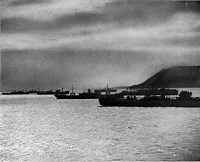 |
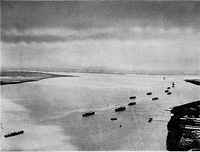 |
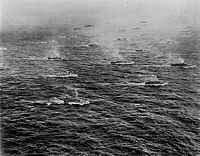 |
| convoy in harbor | leaving harbor | at sea look at all that smoke! a direction sign for U-boats |
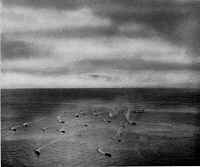 |
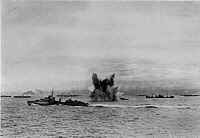 |
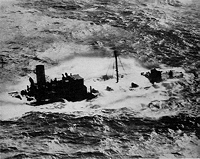 |
| emergency turn | torpedo attack | sinking merchantman |
Hammond Innes' Maddon's Rock starts in Murmansk (the two mentioned above don't describe the place as such.)
For general mindless entertainment and interest I offer you a map of the run; it's from The Captain.
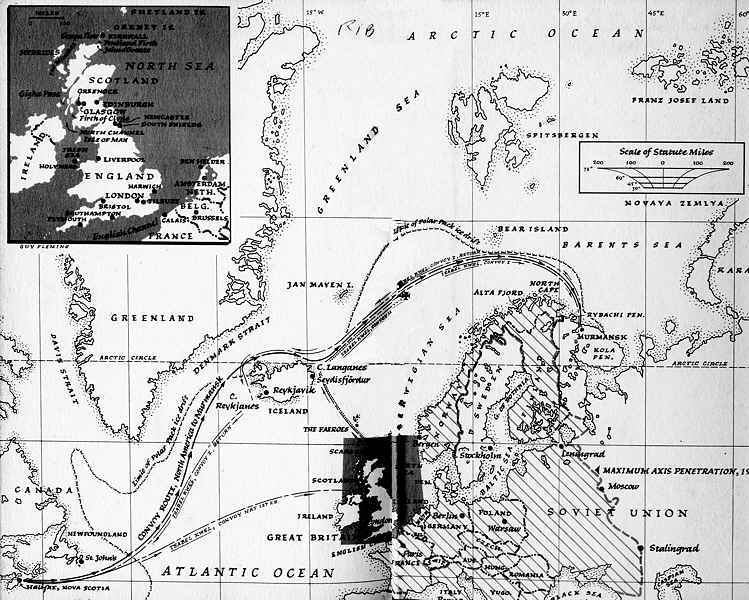
AKA
the North Cape Run, with the stretch rounding the North Cape dubbed
Suicide Alley
Some ships went on to Archangyelsk and Molotovsk on the White Sea
(now Arkhangel'sk and, surprisingly, still Molotovsk)
They were often stuck there for months and months.
books
on the Murmansk convoys
Jan de Hartog: The Captain
C.S. Forester: The Good Shepherd
Hammond Innes: Maddon's Rock

Convoy organization
A convoy was set up to sail in rows and columns of merchantmen; the escorting men of war more or less formed a protective screen around them. Rescue ships, like Jan de Hartog's tug, formed part of the convoy proper. A convoy existed of any number of ships; Graffelman describes one of 24 ships with 1 cruiser escort, and one of 45 ships. In the scheme below, the convoy sails from bottom to top; I leave the ships' names out and just give their convoy numbers. The bold numbers are warships here.
| 1 | 21 | 31 | 41 | 51 | 61 | 71 | 81 | 91 |
| 12 | 22 | 23 | 24 | 25 | 26 | 27 | 28 | 29 |
| 13 | 32 | 33 | 34 | 35 | 36 | 37 | 38 | 39 |
| 14 | 42 | 43 | 44 | - | and | so | on |

discovery - culture - exploration

Curaçao Island live in real time
SEARCH this site or the Web

copyright notice
all material on this site, except where noted
copyright © by , curaçao
reproduction in any form for any purpose is prohibited
without prior consent in writing
